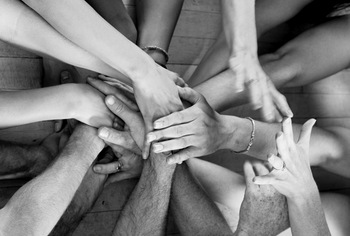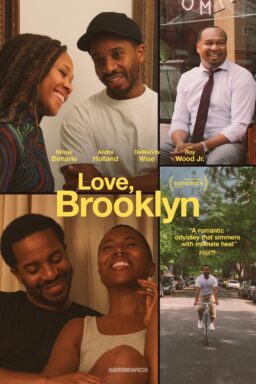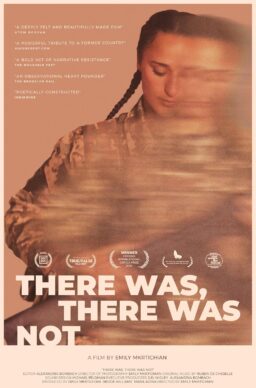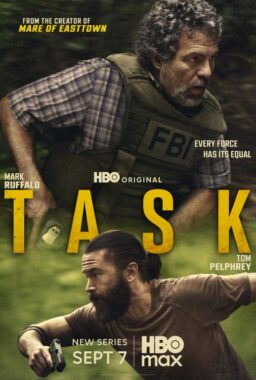
How would I feel if I were a brown student at Miller Valley Elementary School in Prescott, Arizona? A mural was created to depict some of the actual students in the school.
Let’s say I was one of the lucky ones. The mural took shape, and as my face became recognizable, I took some kidding from my classmates and a smile from a pretty girl I liked.
My parents even came over one day to have a look and take some photos to e-mail to the family. The mural was shown on TV, and everybody could see that it was me.
Then a City Councilman named Steve Blair went on his local radio talk show and made some comments about the mural. I didn’t hear him, but I can guess what he said. My dad says it’s open season on brown people in this state. Anyway, for two months white people drove past in their cars and screamed angry words out the window before hurrying away. And the artists got back up on their scaffold and started making my face whiter.
We went over to my grandparent’s house, and my grandmother cried and told me, “I prayed that was ending in my lifetime.” Then there was more news: The City Councilman was fired from his radio show, the Superintendent of Schools climbed up on the scaffold with a bullhorn and apologized for the bad decision, and I guess the artists went back up and started making my skin darker again, but I didn’t go to see, because I never wanted to go near that bullshit mural again.

I am not that American child. I am an American who was born before the schools were integrated in the South. I am an Midwesterner who went with his mother on a trip to Washington, D.C., and my cousin’s company driver showed us the sights, but when we stopped for lunch at Howard Johnson’s he explained he couldn’t go inside because they didn’t serve colored people. “But you’re with us!” I said. “I know,” he said, smiling over my head at my mother, “but they don’t know who you are.” Inside, I asked my mother why they wouldn’t serve him. “They have their own nice places to eat,” she said. I don’t believe she was particularly upset on his behalf.
The first time I noticed that people had different colors of skin I was a very small boy. Our family laundry was done by a colored women on Champaign’s North Side. She was our “warsher woman.” Downstate you pronounced an invisible “R,” so we lived on Warshington Street. I sat down on the floor to play with her son, who was about my age, and he showed me his palm and said it was as white as my palm. I noticed for the first time that the rest of him wasn’t.
In Catholic grade school, there was a colored boy in my class–that was the word we used, “colored,” although Negro was more formal. I remember the class being informed by a nun that he was “just as precious as the rest of you in the eyes of God.” I believed most of what the nuns told us, and I believed that. It made sense. Some years later it occurred to me to wonder how he felt felt when he was singled out.

There were Negro students at Urbana High School, and I knew the athletes because I covered sports for the local newspaper. I didn’t know them, you understand, in the sense of going to their homes or hanging out at the Steak n Shake, and I don’t recall any of them at the Tigers’ Den, the city’s teen hangout in downtown Urbana. They did attend our school dances. There was a kid who wasn’t an athlete, who I liked, and we talked and kidded around, but in those days, well, that was about that.
Strangely, during this time the “idea” of Negroes was on a wholly different track in my mind. I read incessantly during high school, and I met them in the novels of Thomas Wolfe and William Faulkner. I read Richard Wright’s Black Boy and Native Son and Ralph Ellison’s Invisible Man. So I had this concept shaping in my mind that bore no relationship to what was going on in my life. It was theoretical.
This is not a record of my reading but of my understanding. I don’t know if you can understand what it was like in those days. Racism was ingrained in daily life. It wasn’t the overt racism of the South, but more like the pervading background against which which we lived. We were here and they were there and, well, we wished them well, but that was how it was. At this time it was becoming clear to me that I was not merely a Democrat, as I had been raised, but a liberal. When Eisenhower sent the National Guard to Arkansas, I defended him against some who said the federal government had no right interfering. So that was my political position. But where were my feelings centered? Theory will only take you so far.

In college, my understanding shifted. I attended the National Student Congress every summer, and during the one held at Ohio State, two things happened. I gave a dollar to Tom Hayden and he handed me my membership card in Students for a Democratic Society. And one night during a party at Rosa Luxembourg House, I met a Negro girl and we went outside and sat in the back seat of a car and we talked and kissed and she was sweet and gentle and she smelled of Ivory Soap. We feel asleep in each other’s arms. We met again in maybe 10 years later in New York City, recognizing each other on the street, and had a drink and talked about how young we had been. In my inner development, I had been younger than she knew.
Those were the days of the Civil Rights Movement. We linked hands and sang “We Shall Overcome.” We protested. We demonstrated. Among the students I met at those Student Congresses were Stokely Carmichael, Julian Bond–and, for that matter, Barney Frank. They were born to be who they became. I was still in a process of change. My emotional life was catching up to my intellectual or political life.
Later in the 1960s Negros became Blacks. As a movie critic, I sort of watched that happening. The new usage first appears in my reviews around 1967 or 1968. Afros. Angela Davis. Black exploitation movies. Black is beautiful. Long interviews with Ossie Davis, Brock Peters, Sidney Poitier, Abbey Lincoln, Yaphet Kotto. What point am I making? None. It’s not as if I sat at their feet and learned about race. It’s more that the whole climate was changing, growing more free and open, and the movies were changing, too.

At some time during the years after the day I sat on the floor and looked at that little boy’s palm, something happened inside me and I saw black people differently–and brown people and Asians as well. I made friends, I dated, I worked with them, I drank with them, we cooked, we partied, we laughed, sometimes we loved. This is as it should have been from the start of my life, but I was born into a different America and was a child of my times until I learned enough to grow up. I do not propose myself as an example, because I was carried along with my society as it awkwardly felt and fought its way out of racism.
When I proposed marriage to Chaz, it was because of the best possible reason: I wanted to be married to this woman. Howard Stern asked me on the radio one day if I thought of Chaz as being black every time I looked at her. I didn’t resent the question. Howard Stern’s gift is the nerve to ask personal questions. I told him, honestly, that when I looked at her I saw Chaz. Chaz. A fact. A person of enormous importance to me. Chaz. A history. Memories. Love. Passion. Laughter. Her Chaz-ness filled my field of vision. Yes, I see that she is black, and she sees that I am white, but how sad it would be if that were in the foreground. Now, with so many of my own family dead, her family gives me a family, an emotional home I need. Before our first trip out of town, she took me home to meet her mother.

I believe at some point in the development of healthy people there must come a time when we instinctively try to understand how others feel. We may not succeed. There are many people in this world today who remain enigmas to me, and some who are offensive. But that is not because of their race. It is usually because of their beliefs.
That brings me back around to the story of the school mural. I began up above by imagining I was a student in Prescott, Arizona, with my face being painted over. That was easy for me. What I cannot imagine is what it would be like to be one of those people driving past in their cars day after day and screaming hateful things out of the window. How do you get to that place in your life? Were you raised as a racist, or become one on your own? Yes, there was racism involved as my mother let the driver wait outside in the car, but my mother had not evolved past that point at that time. The hard-won social struggles of the 1960s and before have fundamentally altered the feelings most of us breathe, and we have evolved, and that is how America will survive. We are all in this together.
But what about the people in those cars? They don’t breathe that air. They don’t think of the feelings of the kids on the mural. They don’t like those kids in the school. It’s not as if they have reasons. They simply hate. Why would they do that? What have they shut down inside? Why do they resent the rights of others? Our rights must come first before our fears. And our rights are their rights, whoever “they” are.

Not along ago I read this observation by Clint Eastwood: “The less secure a man is, the more likely he is to have extreme prejudice.” Do the drive-by haters feel insecure? How are they threatened? What have they talked themselves into? Who benefits by feeding off their fear? We have a black man in the White House, and I suspect they don’t like that very much. They don’t want to accept the reality that other races live here right along with them, and are doing just fine and making a contribution and the same sun rises and sets on us all. Do they fear their own adequacy? Do they grasp for assurance that they’re “better”–which means, not worse? Those poor people. It must be agony to live with such hate, and to seek the company of others so damaged.
One day in high school study hall, a Negro girl walked in who had dyed her hair a lighter brown. Laughter spread through the room. We had never, ever, seen that done before. It was unexpected, a surprise, and our laughter was partly an expression of nervousness and uncertainty. I don’t think we wanted to be cruel. But we had our ideas about Negroes, and her hair didn’t fit.
Think of her. She wanted to try her hair a lighter brown, and perhaps her mother and sisters helped her, and she was told she looked pretty, and then she went to school and we laughed at her. I wonder if she has ever forgotten that day. God damn it, how did we make her feel? We have to make this country a place where no one needs to feel that way.
The photograph at the top shows artists Pamela J. Smith and R.E. Wall, also the project’s director, sitting in front of their “Go on Green” mural outside Miller Valley Elementary School in Prescott. Photo by Matt Hinshaw of the Prescott Daily Courier.











